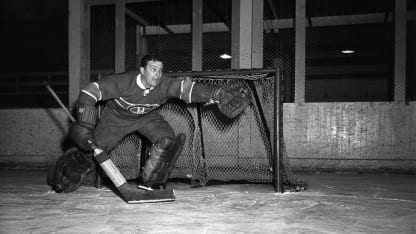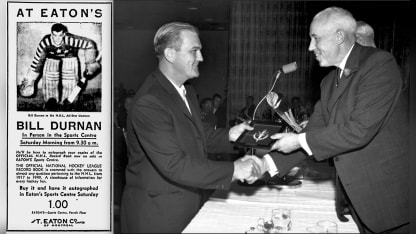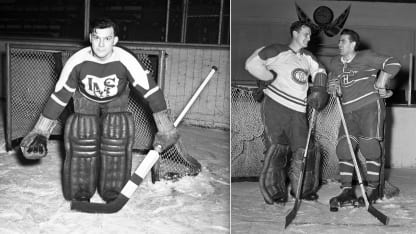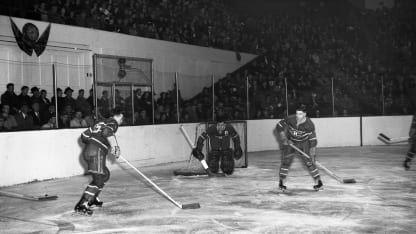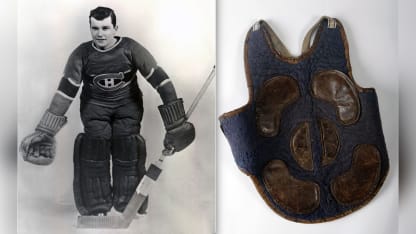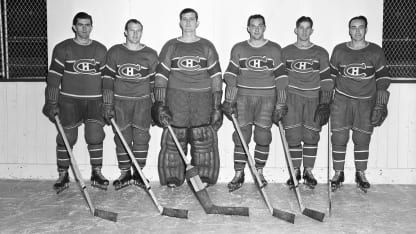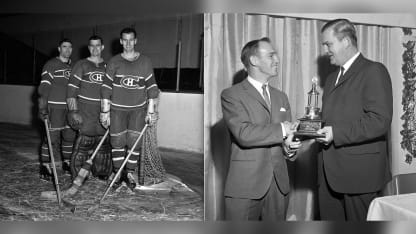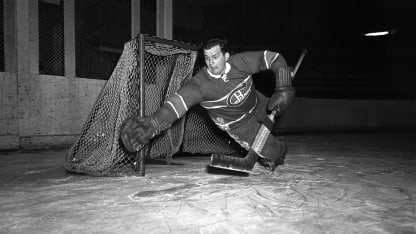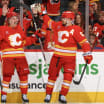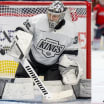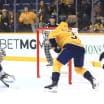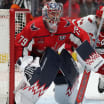Welcome to Goalie Week. NHL Social is celebrating goaltending with NHL Goalie Week from Aug. 26 to Sept. 1, reveling in the uniqueness and artistry of the puck-stoppers through the decades. In that spirit, NHL.com columnist Dave Stubbs takes a look at late Montreal Canadiens legend Bill Durnan, statistically the greatest at his position during the 1940s. Sixty years ago on Aug. 29, Durnan was inducted into the Hockey Hall of Fame as a member of the Class of 1964.
The numbers of the late Bill Durnan are practically off the charts.
Fifteen strikeouts per game for 25 consecutive years on a fast-pitch diamond as one of Canada’s finest softball pitchers ever. Fourteen no-hitters, officially, but surely many more than that. Two world championship victories playing on teams out of Toronto, his hometown. Lifetime batting average of .350.
On the soccer pitch, as a young and powerful halfback, Durnan was scouted by two English First Division teams, offered contracts by each.
But since we’re here for Goalie Week, let’s add these statistics from Durnan’s remarkable NHL career of just seven seasons, all with the Montreal Canadiens:
